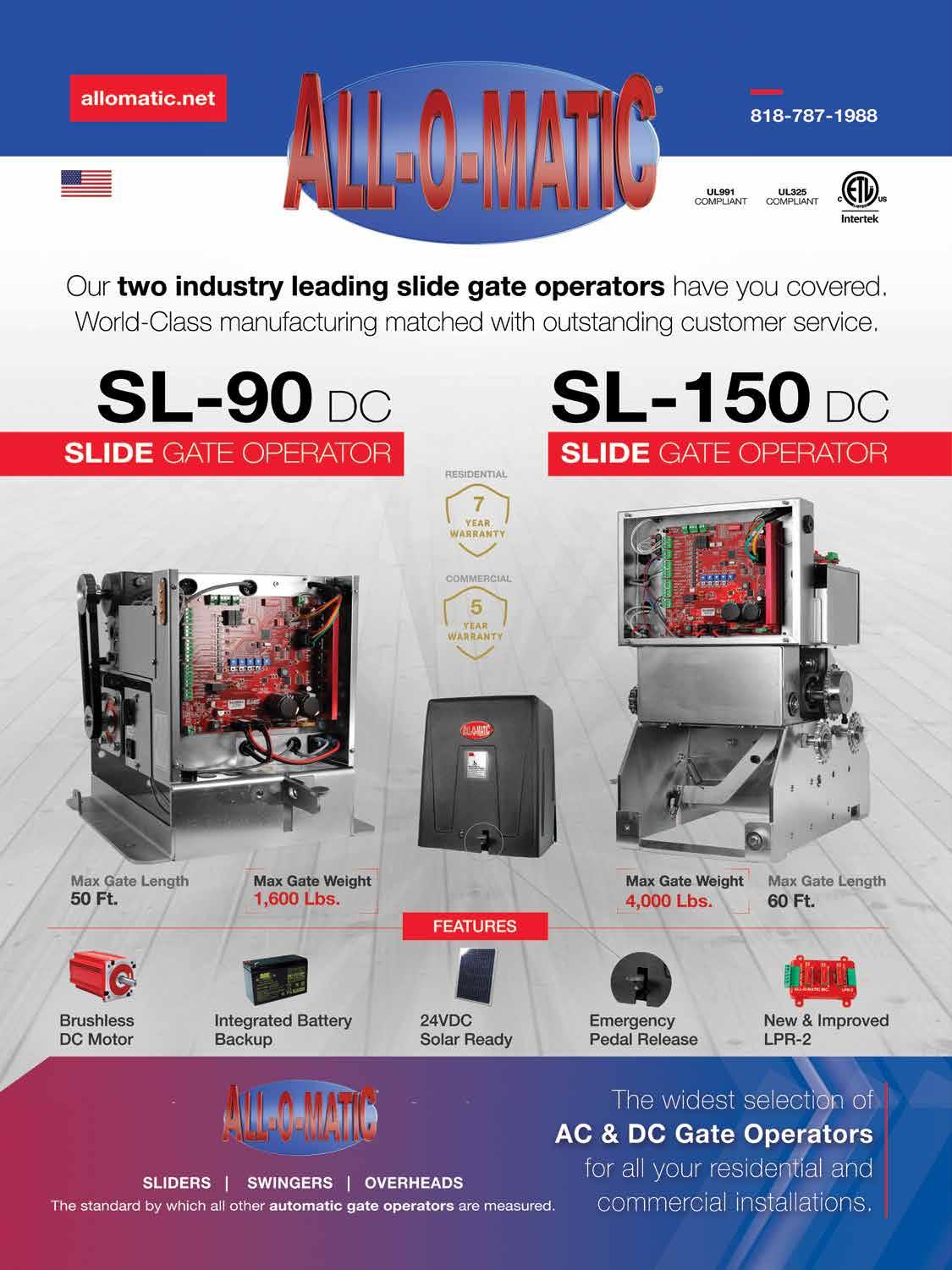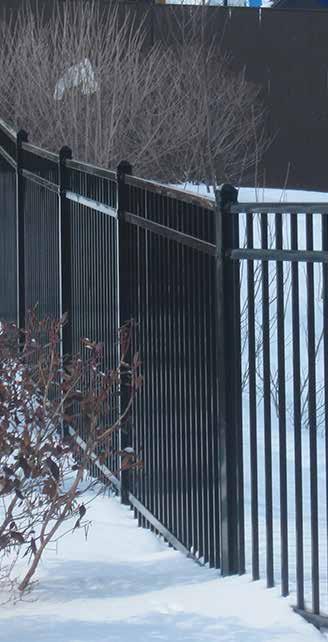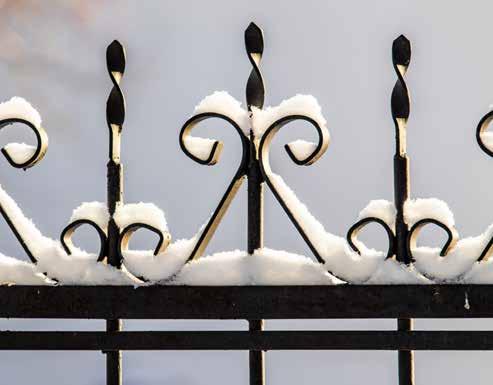
2 minute read
All-O-Matic
Due to the potential issues that wood, vinyl, and aluminum fencing have in cold weather, the Fortress Building Products team recommends steel as a choice that will stand up best to winter year after year. Steel does need more than a thin coat of paint to do that, however and not all steel fences are created equal. There are several types of coatings that preserve steel from rusting away, and it is best to understand a little about them before you go looking for a steel fence:
PRE-GALVANIZATION
Most steel that is meant for outdoor use is pre-galvanized right at the steel mill. This coat is a thin layer of zinc applied to the stock metal. You can actually see an example of this on most chain link fence posts. The mottled pattern you see on these posts is actually crystallized zinc. This pre-galvanization layer protects the metal from moisture which could cause rust, but it is very thin and can be easily scratched off. Cutting and welding in fabrication will actually remove the galvanization around the cuts and welds.
HOT-DIPPED GALVANIZATION
This method involves adding a post-fabrication coat of zinc. In this process an entire piece, once assembled, is then dipped in molten zinc to coat it. This type of galvanization is much thicker than the pregalvanization coating that is usually applied straight from the mill, and it lasts longer. It is the industry-wide standard for small hardware such as outdoor screws and bolts. It is a sacrificial coating, meaning that as long as some zinc remains on the steel, the zinc will corrode instead of the steel. HDG is a rugged coating and works well on heavy-duty objects, but for something like a fence, the corrosion of the thick layer of zinc as it is ‘sacrificed’ can affect the paint or powder coating on top of the metal, causing unattractive white patches to form.
ELECTROPHORETIC DEPOSITION
Also called an e-coat, this is an alternative to hot-dipped galvanization which uses a non-metallic coating. This method of coating relies on the e-coat particles having an opposing charge to the piece being coated. These particles are attracted to the metal due to this opposite charge and form a thin, uniform layer over it. E-coating creates a smooth, extremely durable, moisture-proof and non-sacrificial layer that can be safely coated with a paint or powder coat without any danger of galvanic corrosion. For this reason, the automotive industry uses this method of rustproofing on the underbellies of cars. The fact that e-coatings are designed to protect against road salt and other corrosive materials makes e-coated fences perfect for coastal areas.
All of these coating systems are aimed more at rustproofing than they are at appearances, which means that once these coatings are applied, your fencing will need to be coated with an aesthetically appealing coat. While it is possible to paint over any of these coatings with traditional paint, this generally doesn’t work into the joints very well. Even with a primer coat, the odds are pretty good that the paint will still end up peeling off sooner or later. A better option is powder coating, which is applied as a layer of powder and then baked on to the metal. This forms a uniform layer that can vary in thickness as desired and tends to last quite a bit longer than traditional paint on most surfaces.
Learn more about Fortress Building Products at www.fortressbp.com.












